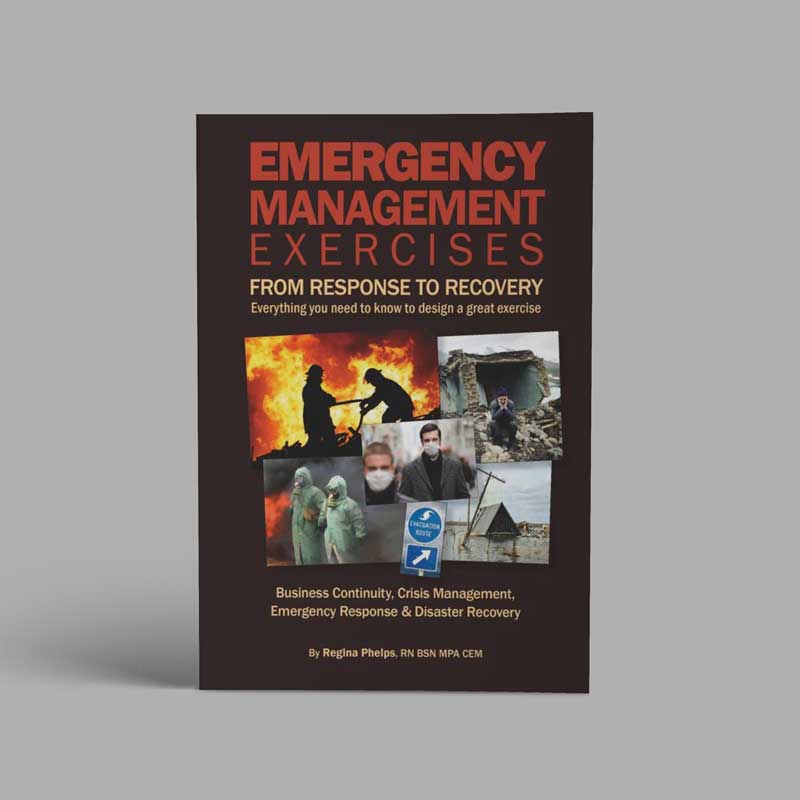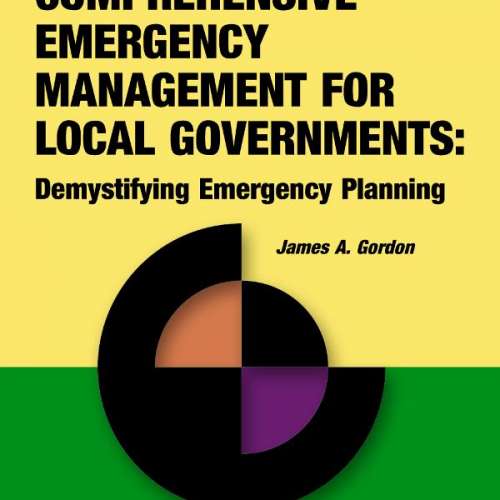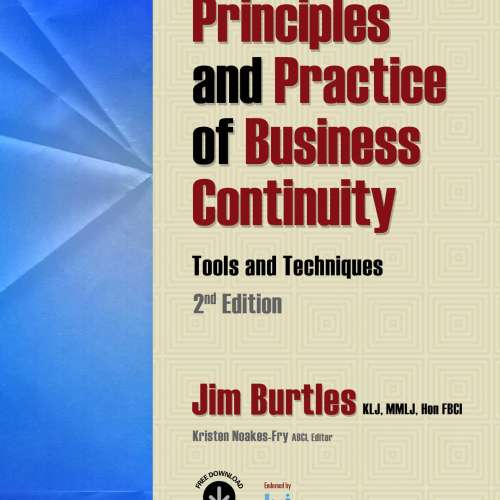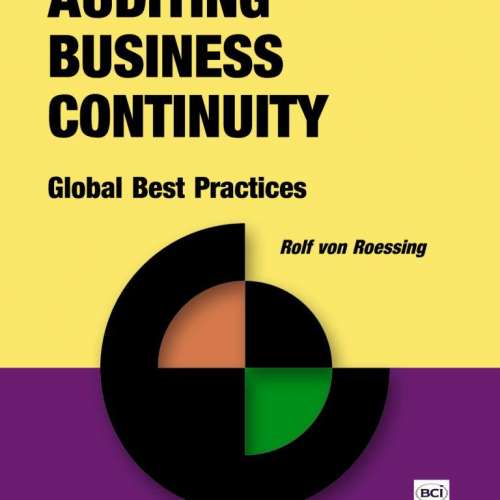For the growing number of individuals charged with ensuring effective business continuity, disaster recovery, and emergency management plans, conducting an ineffective exercise constitutes a lost opportunity and a potential major setback to your planning efforts. Well-executed exercises are simply the best and only viable approach. Any type of planner will welcome this hands-on guide that is clearly the bridge to getting the most out of emergency management exercises.
Outlining the types of exercises used by organizations to test plans, the bulk of Emergency Management Exercises fleshes out how to run — end to end — the three most common types; Orientation, Tabletop and Functional. It’s loaded with examples of processes, charts, and templates that can be easily tailored to an organization, and even includes great ideas for making exercises more engaging (such as using local A-V talent to create a mock radio broadcast). The book provides the planner with a jump-start based on proven practices. This is a solid guide resting on a well-thought-out foundation.
Having been involved in the business continuity management field for twenty plus years, I know that one of the biggest challenges facing all types of institutions is to conduct exercises that make good use of the participants’ time and ensure plans are current and ready to be executed.
Sometimes the goal that drives the exercise and the objectives that support that goal have not been defined, which can lead to a lost focus or missed opportunity. Emergency Management Exercises not only addresses these common gaps, it provides the reasoning behind why they need to be closed. It also illustrates how to document results: It is not unusual for an under-planned exercise to adjourn without defined outcomes or actionable next steps. By following the suggestions in this handbook, you can capture results, present findings and track action items.
Finally, buy-in is crucial, as any experienced planner will tell you. Phelps’ book emphasizes a brilliant design-team approach that can help “evangelize” the value of exercises and spread awareness throughout the organization, including to managers.
Regina Phelps is an established industry expert in the area of emergency management planning and exercises, and has helped hundreds of companies implement crisis management plans. She does planners a big favor with this book by encapsulating her more than two decades’ experience conducting all types of exercises for organizations into 200+ pages of practical and practicable information. Phelps has actually managed to make designing and conducting these exercises achievable. Here is a concise, logical progression of planning, along with the techniques and tools that will bring desired results.
Emergency Management Exercises is an invaluable guidebook from a trusted and experienced veteran in the field.
Randall Till, MBCP
Randall Till, MBCP is principal and founder of Till Continuity Group. He is a business continuity professional with 20 plus years’ experience creating and implementing business continuity programs for business organizations.
===============================================================================
We’re very pleased to bring you both a review of, and excerpt from, Emergency Management Exercises by Regina Phelps, RN BSN, MPA, CEM. If all the initials after her name don’t convince you that she knows her stuff, take it from me that this is the single most useful publication on this subject that I’ve seen in my almost 30 years of crisis management experience. When you’re a more “mature” practitioner (I prefer “mature” to “older than dirt”), it’s unusual to learn something new in your field – but in this book, Regina has taught me a lot that I intend to use for the benefit of my clients.
Jonathan Bernstein


 1982, she has provided consultation and speaking services to clients in four continents. She is founder of Emergency Management & Safety Solutions, a consulting company specializing in emergency management, continuity planning, and safety. A partial list of clients includes McAfee, IMF, Microsoft, American Express, Northern Trust, VISA, Triton Container, Intuit, Stanford University, Caltech Institute, JPL, Merck, MasterCard, and the World Bank.
1982, she has provided consultation and speaking services to clients in four continents. She is founder of Emergency Management & Safety Solutions, a consulting company specializing in emergency management, continuity planning, and safety. A partial list of clients includes McAfee, IMF, Microsoft, American Express, Northern Trust, VISA, Triton Container, Intuit, Stanford University, Caltech Institute, JPL, Merck, MasterCard, and the World Bank.

